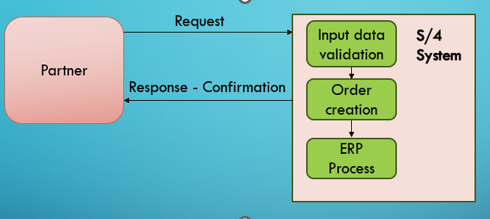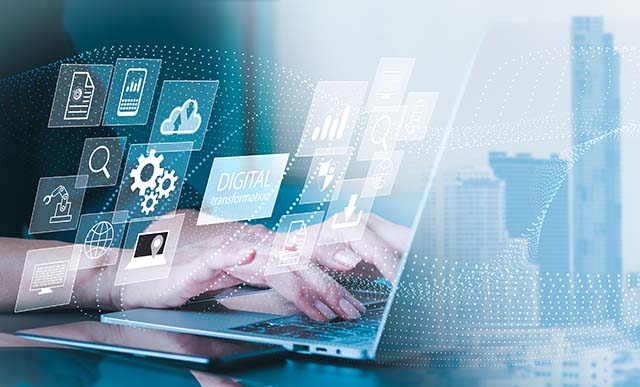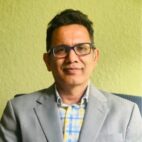In this episode of the SAPinsider Las Vegas 2025 podcast, host Robert Holland sits down with Zach Davis from Norfolk Southern Corporation to discuss the company’s ongoing digital transformation with SAP S/4HANA. Davis shares his journey from working on SAP BASIS to leading functional project delivery, highlighting Norfolk Southern’s shift from a Greenfield implementation to a more efficient lift-and-shift approach from SAP ECC to SAP S/4HANA. The conversation explores the challenges of legacy customizations, the importance of user-centric design, and how mobile applications are reshaping field operations. Davis emphasizes the need for business process alignment, adoption-focused development, and leveraging AI and cloud solutions to optimize operations. He also shares insights on the value of industry events like SAP Insider for fostering collaboration and knowledge exchange.
LV Podcast_ZachDavis_NorfolkSouthern
0:00
Hello, I'm Robert Holland, and this is the SAP Insider Las Vegas 2025 podcast.
0:07
Thank you for listening as we speak with SAP insiders and industry experts about their experiences in the SAP space.
0:14
In this episode, I'm speaking with Zach Davis of Norfolk Southern Corporation.
0:20
Zach, please tell us a little bit about yourself and your role.
0:22
Yeah, thanks, Robert.
0:23
Thanks for having me on.
0:25
My name is Zach Davis.
0:26
My role right now at Norfolk Southern is essentially functional project delivery for the SAP space across a different, you know, set of functional modules.
0:39
All right, so you're doing functional module delivery.
0:43
What's what's your history with SAP and and and what does the SAP landscape currently look like in Norfolk sub?
0:51
Yeah, that's a good question and kind of takes me to where I I'm working now and what I'm doing currently for Norfolk Southern.
0:56
So I started out in the SAP BASIS team for Norfolk Southern.
1:00
It was trial by fire.
1:01
It was the summer before we went live with SAP.
1:04
Learned a lot, did a lot.
1:06
A couple years into that I told myself, you know, I want to go be an expert in the craft.
1:11
I want to go learn more and do more and see more.
1:13
Stepped out into consulting quickly got into S4 consulting in the early days of S4.
1:19
Since then, I kind of closed the book on consulting at that time and came back into the customer side at Norfolk Southern.
1:24
And I've been delivering functional projects for the SAP platform now for the last five years or so.
1:30
And right now you'll hear me say it a couple times during our our talk here.
1:34
It's very heavily As for lift and shift implementation, we're heads down on that and it's our main focus.
1:41
So are you lifting and shifting from ECC into S4 or are you lifting and shifting S4 into the cloud or something like that?
1:49
Lifting and shifting ECC, we, we intended to be purely Greenfield.
1:53
When we kind of got into the early days of S4, we built out a few function modules, EAM and EHS and other, other things around SEC purely Greenfield.
2:04
But we noticed our movements into the space was going too slow and too costly.
2:08
And so we paused a lot of things and said, you know what, if we did lift and shift, it might be more advantageous for us.
2:14
And I would actually find the speed that we need.
2:16
So that's our current, that's our current approach.
2:19
OK.
2:19
I mean, that absolutely makes sense because there's a lot to do.
2:24
I mean, it's a, it's a big move.
2:25
I don't know how many, you know, ERP systems you're, you're looking at moving, but it's, it's not trivial.
2:32
It certainly is not.
2:33
And you know, if, if we sat down longer and had, you know, 30 or 45 minutes, I'd be able to explain to you what railroading is and what Norfolk Southern does.
2:42
But the, the general nature of what we do is we like to think, think of ourselves very special.
2:47
And this, the industry we work in is very nuanced and we have to customize SAP extensively to kind of bend it to fit what we do.
2:58
We're paying for that a little bit, but at the same time, it's just the nature of how we have to approach it.
3:02
So you're paying for it in the sense of it's complicating the lift and shift to SAPS for Hana or in you're paying for it in other ways.
3:11
It's kind of the way you think about looking backwards in time of saying, hey, we we now need to go through a technical, you know, upgrade of sorts or an actual lift and shift like this right here.
3:21
And you start to notice the things you did in the past are making it more difficult to accomplish what you want to do now.
3:29
So it's not necessarily pure dollars costly.
3:31
It's we shouldn't have really made that decision to bend that module this way.
3:35
We should have kind of kept it more standard.
3:39
Yeah, that makes a lot of sense.
3:40
So I guess this is really your last major, the last major enterprise deployment You've been doing this, this ongoing move to SAPS for HANA, you know where we're asleep, Where are you?
3:53
Where are you in that process and what are you sort of learning from the experience?
3:58
But obviously you've talked a little bit about the fact that some different choices much earlier might have streamlined the process a little bit, right?
4:08
Yeah.
4:08
What we're learning is we're, we're about, you know, our target go live is, I don't want to say target our go live is 1/1/26 or essentially the turn of the year into 2026.
4:18
And so I think it's shown us how simplified we need to focus on the think about the project instead of thinking we want to get into S4 and really unleash the technology, unleash the functionality our our new approaches.
4:32
Let's just successfully get there.
4:33
And I don't think think it's a bad approach.
4:35
I think it's a purely sound approach.
4:38
I just think that there would be a different appetite for different things if we had gone about our implementation differently, you know, 10 years ago for ECC.
4:46
Yeah.
4:47
Yeah.
4:48
Well, I mean, I think that's true of the experience of a lot of ECC customers, right?
4:52
I mean, it's, it's there's a lot of things to work out now as part of that move from ECC to, you know, to SAPS for HANA, you know, customizations, customized code, you know, transports tables, you added Z tables, Bapi's bodies, you know, all the fun stuff, right?
5:13
Yeah, exactly.
5:14
And you know, if you think 10 years ago, you're just doing it to get it done.
5:18
But the ramifications aren't yet totally noticed.
5:20
And then now technology kind of evolves into being more as a service and then the cloud and need to be a little bit more standard.
5:29
It's certainly something that would have helped to know.
5:32
But you know, again, we're going to get there and we're going to, you know, take on a new approach once we get into S4 and say, now we're on the new platform, what are the what are our next sort of functionality or, or new technologies within the S4 platform?
5:45
We want to bite off, you know, whether that's getting more into how to optimize T codes or getting more into Fiori, things like that.
5:51
So just different decisions that come along the way as we find success.
5:55
Yeah.
5:55
So I mean, that's sort of I think plays into, you know, my next question, which is, you know, obviously you've you've got a goal of getting to SABS for Hannah by 1126.
6:06
Well, what are your long term strategic goals?
6:08
I mean, for not just software, but people, processes, systems, data, It's more important than ever, particularly if you're planning on leveraging AI or anything AI related, you know, data is so important for that.
6:26
And, and what are you sort of putting in place to help you meet those goals?
6:32
I'm going to try to answer that in a few different ways.
6:35
When we think about people and process.
6:37
So SAP for a long time for us has been the, the system that ran our financials and our HR system and our procurement and different things around that around the, the business side of Norfolk Southern.
6:50
We would like to try to get more operationally focused with the end users if we can.
6:54
When I say operations, if you're thinking railroad, think outside of our main building.
6:59
So people working on the, the, the trains and the track and, and what we've really tried to do with the things we have built successfully in S4.
7:07
So outside of the lift and shift, we do have live functionality in S4, which is what I'm going to talk about in my presentation tomorrow.
7:14
We have applications that are built purely for the end user that is out working in the railroad.
7:19
And so when I, when I say those two things together, what I'm getting at is we're trying to kind of grow the focus of what actually is being built inside of SAP for the end user and pointing that towards the people who may not ever typically interact with SAP.
7:33
We're using SAP as the engine behind the functionality that we're providing to them.
7:38
And I may not have answered the second part or the third part of your question.
7:42
Well, that was more what's, what solutions are you putting in place solutions and the things that I sort of just said was most of its mobile focused.
7:51
We do want to try to use different AI tools around helping financials and things like that as we kind of grow into modernizing and and leveraging S4.
8:00
And I think that we certainly have an opportunity to fully leverage S4.
8:04
Once we actually can kind of get through the lift and shift and say now what's our next phase of doing this?
8:10
What's the next thing we're going to do here?
8:12
Because I, I certainly think that our approach is sound.
8:15
It's just all about now that we have these new tools at our fingertips and these new, these new technologies and we're successfully there, what can we sit back and say?
8:23
Here's our next focus in terms of leveraging the opportunities.
8:27
Yeah.
8:28
And I, I think that's, I don't know, are you, I think that's, I think that's a good approach.
8:32
And I think that's a, that's a good point.
8:33
I mean, are you in this mobile type of applications?
8:37
Are you looking, are you leveraging something like SAPBTP or are you looking, you know what stuff that's being provided by you know, some of the, you know, the major clown providers, the hyperscalers combination of combination of most when you think about what we're building here, think mostly service delivery via S4 and via BTP and consumption on both sides, both in SAP and on mobile side.
9:02
And we build Angular applications that are homegrown purely for us.
9:06
We've, we've made a conscious decision to step away from using things that are mostly Fiori because we're able to kind of scale and, and build the way we need to for our end users.
9:17
And like I've mentioned a few times, and certainly whenever this comes out will be after the conference, but folks who come to the presentation will hear that our end users really don't want to know that they're interacting with really anything.
9:30
It's not just SAP, it's, it needs to be simple to use and very a few clicks to accomplish a business process.
9:37
So SAP for us is the engine that executes the process, you know, the Angular application and BTC, the BTP and Odata services are sort of the, the by product and the function that executes that.
9:47
But the, the customization of the user interface, what allows us to deliver that business process to a field user in their hands on their mobile device, right.
9:57
So they don't really care what's on the back end so long as it's giving them the information and, you know, the, the pieces they need to move forward.
10:07
Exactly.
10:07
And we've, we've taken a lot of paper and pencil processes or photos with a digital camera that is uploaded to a computer.
10:14
And we've made that purely inside of a mobile device.
10:16
So it, we do leverage a different content manager style system.
10:20
We, we do leverage other things that help execute that.
10:22
Like we, we use a lot of GIS, we use a lot of process orchestration.
10:27
But essentially S4 is the thing that unlocks that functionality for us.
10:31
But nobody's really the wiser of it outside of the team that built it.
10:35
Yeah.
10:36
So I mean, you know, obviously your focus here has been on, you know, mobile applications, SAPS for HANA, you know, moving to that and you've got some experiences with those.
10:49
I mean, what what is it that what are the some of the lessons that you've learned from from rolling this out, from doing these applications that are specifically designed for your field teams and, you know, meeting their everyday needs.
11:02
You know, the, the main lessons learned are really that there's benefits sitting with the, the person who's going to use it.
11:11
There's benefit and experiencing it in their hands.
11:14
There's benefit and finding a product owner that's going to help you design an application that is, that is built for purpose, It's built for a function to execute and it's scalable from there.
11:23
So we don't want to try to come out and build this huge suite of things for them to click and interact with, execute their day.
11:30
The, the people who need to use these things need to move fast and so we use that mindset we also kind of use a mindset around what's legacy there for them works now so we need to make sure that what we deliver works and they don't want to consider to go back to a legacy system after the fact.
11:48
And so we want to build for replacement.
11:49
We want to build for adoption.
11:52
Adoption is one of the biggest things that I think that can get overlooked.
11:55
It's because we might sit in the the office building and build this beautiful application, but the folks using it have to want to use it over their old system.
12:06
And I think that those are the two things in terms of what we want to take into mindset is product ownership, help you build that thing that we don't quite know about as technologists, but also build it for purpose and build it for adoption.
12:18
Yeah.
12:18
So it's really a matter of giving them exactly what they need and making it so that it's not necessary to go back.
12:27
Correct.
12:27
Yeah.
12:28
That would be the worst case scenario.
12:30
I mean, lofty goals, certainly, you know, you're doing OK with them so far.
12:36
Yeah.
12:36
I mean, you know, there's, it's interesting when you think about the user population and we all work for the same company, but there's, you know, people have different approaches to to replacing technology and replacing applications.
12:48
And it's both opinions are valid.
12:51
And it's really shown me that the teams that we work with from the technology side really have to take on a business process mindset.
12:59
And I know it's probably sounds so fancy, business process mindset, but it means think about what someone who is up in the Northeast when it's cold and has gloves on are going to have to do to interact with your application.
13:10
Or what if it's really sunny?
13:12
Or what if it's really raining or it's raining.
13:14
Or, you know, another thing that we didn't even mention is what if they don't have a sell signal?
13:19
These people work all across the Eastern seaboard.
13:22
So we've got to build for, we've got to build with them in our mindset, but also kind of adopt the way that they think and the way that they work because we're all just kind of one company working towards this, you know, same end goals.
13:33
So, yeah.
13:34
And obviously, you know, those sort of challenges are where, you know, having the input of the, you know, the users and the business teams is, is vital.
13:43
And that's the business process mindset you're talking about.
13:45
I mean, it's nothing.
13:46
It it's, it's, it really comes down to the people who use the system have to be involved in the development of it, otherwise they're not going to use it.
13:54
Absolutely.
13:55
Some of the things we hear sometimes is sometimes we might try to say we don't want you to feel like this is happening to you.
14:03
We're both doing this together.
14:04
This isn't just somewhat, I'm not just giving you this replacement, replacement application.
14:09
We want you kind of there from the beginning, helping us build it, design it so that you're able to adopt it.
14:14
You know, the more people you're going to bring into the fold as you're building these things, they'll be natural adopters once you start to get the product out.
14:21
So, yeah, yeah.
14:24
So I mean, I mean that sounds, that sounds like a great piece of advice in general, but is there a specific piece of advice that you would sort of give or that you would offer, you know, regarding the transformation that you're going through to someone else who might be doing something similar?
14:39
It's a lot of the things we just talked about.
14:40
I mean, I would, I would, I would focus more on quality standard back end function and then end user, sorry, the mobile app side being the, the customer user interface.
14:53
And we can still keep a relatively clean core that way, even though I like I said, we like to customize things, but we've now kind of flipped it where we customize the UI instead of customizing the actual business process inside the function module.
15:06
So that's sort of how I think about if you're going to start approaching more mobility for your enterprise.
15:12
And that's part of the what my topic is called.
15:14
It's empowering the enterprise if you're going through that type of transformation.
15:19
I certainly think that there's a lot of options.
15:21
You can go with native Fiori mobile apps.
15:23
They have a lot of functionality now around offline mode and different things that the field service management applications offer.
15:30
I think it would be, I think my advice would be to take it all into view.
15:34
See what technologies you have in house, see what legacy applications you're going to try to replace and just make sure that you're building purpose built future proof applications that are going to be consistently used by the future of your enterprise.
15:49
And I think they'll have a way of sticking just by nature because of all the things we talked about around adoption mindset and, you know, purpose built applications.
15:58
Yeah, yeah, absolutely.
16:01
Well, I mean, I certainly these podcasts aren't going live during the event, but I would certainly encourage anyone who's listening to this later on to, you know, take a look at your session and you know, if they're not here at the event, but to, to download it and check it out.
16:16
But one last question.
16:18
What sort of benefit do you receive from coming to an event like SAP Insider and what would make it even more valuable for you?
16:28
I, I think that the podcast is a, is a great option and almost, if you can get to a point of where it's publishing that day would be.
16:35
I mean, it would be very difficult the production level, but it would be awesome because you'd almost have this buzz of the buzz of the the day's agenda kind of in your ear.
16:43
And but I think that's just overall just being around people that are seeking similar things, whether it's advice or implementation strategy or just to sit down over a coffee or a beer and kind of give out your grievances around frustrations that you're having.
16:59
And everyone's kind of working towards similar goals, especially with S4 looming, you know, different things like that.
17:05
But I think it's just the collective hive mind of we're all here as SAP technologists.
17:10
We're all trying to, you know, do right by our budgets, do right by our companies, and at the end of the day, just be successful.
17:18
Yeah.
17:18
And I think that's something we're very much hoping to achieve this year and and have for many years in the past.
17:23
So, you know, Zach, Zach, thank you so much for for stopping by and chatting with the SAP Insider community.
17:31
It's been great having you.
17:32
Yeah, I appreciate it.
17:33
Happy to do it.
17:34
Thank you.









